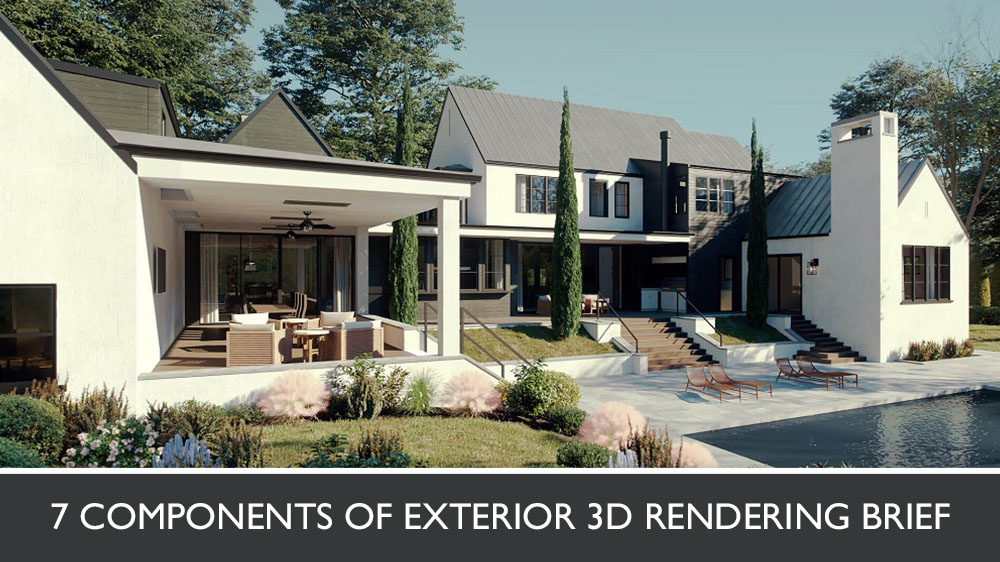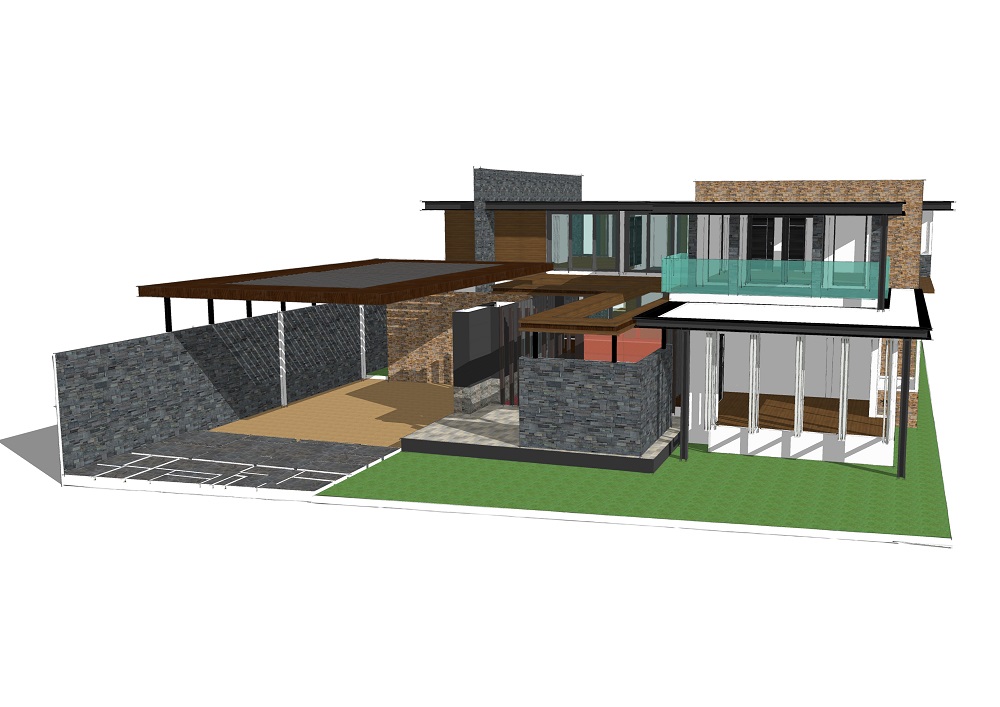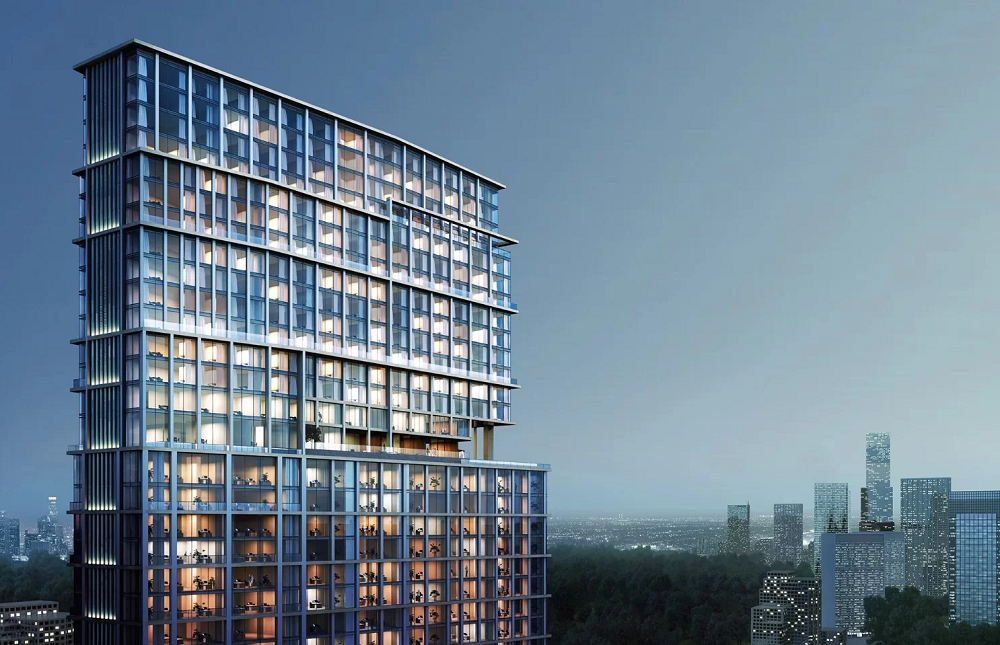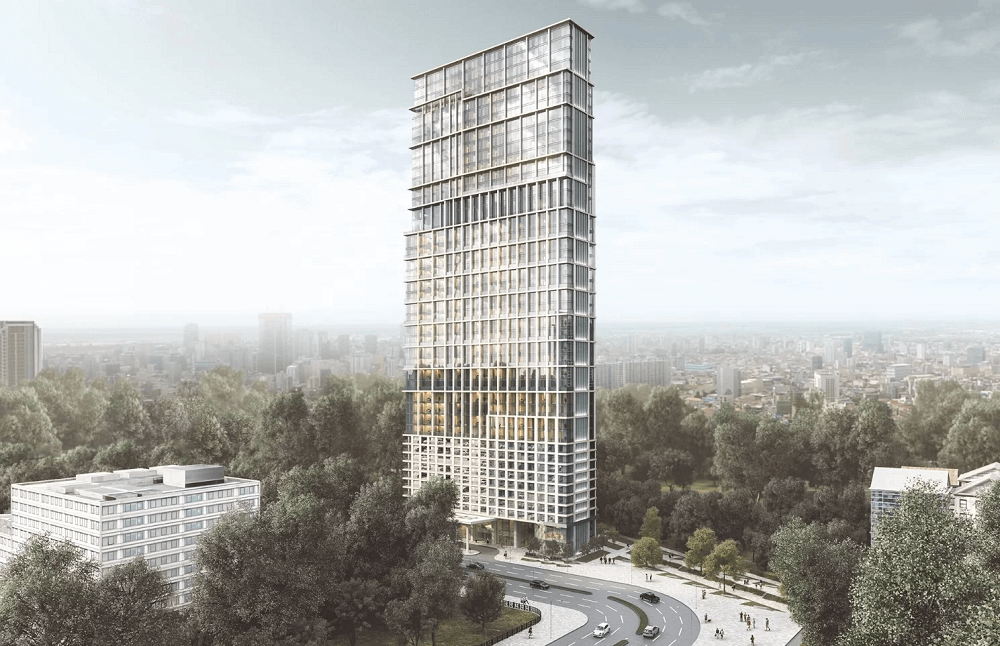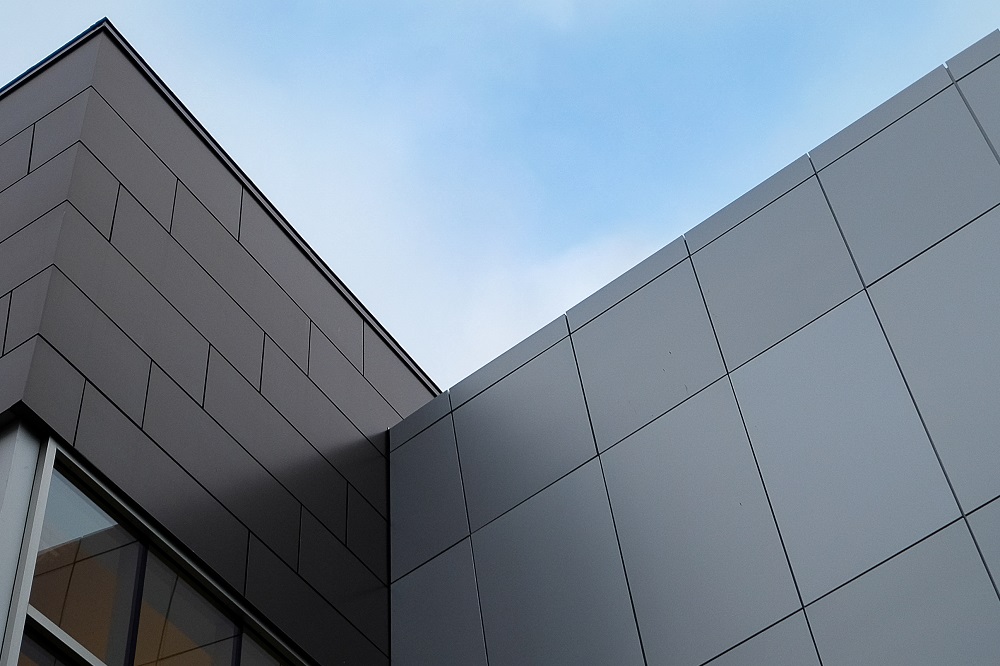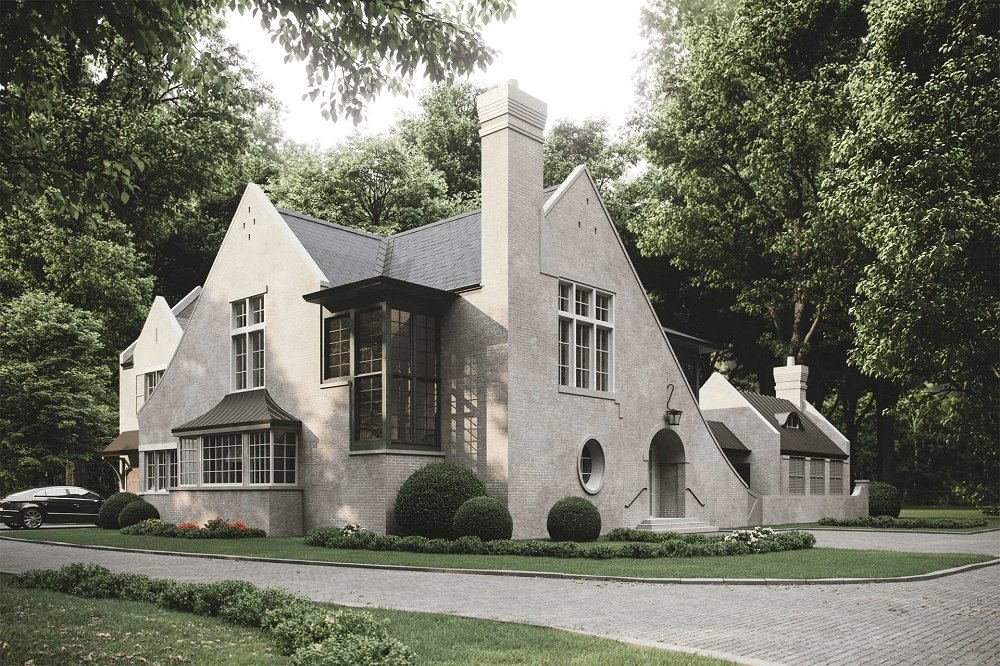In an outsourced 3D exterior rendering project, an architect’s brief can make all the difference. A comprehensive, well-structured assignment facilitates a quick and high-quality result. The question then arises: what should this document pack include?
In this article, the team of our CGI animation studio will delve into the essential ingredients to make your 3D exterior rendering project a resounding success. Let’s start right away!
#1. Architectural 3D Model
A 3D model is the bedrock of any exterior rendering project. If you already have one created in software like SketchUp, that’s perfect. This model will serve as the starting point for the 3D artist. It provides the raw design, the dimensional data, and a basic layout of the architecture. Oftentimes, it’s possible to import such a model in 3ds Max or similar software and then optimize it for photorealistic rendering. If that’s not possible, the model will still be a perfect visual reference.
Overall, a 3D model ensures a seamless transition into the rendering stage, minimizing misinterpretations. However, if you don’t have one, it’s not a problem. A professional 3D rendering studio will nail your project anyways.
#2. Drawings
Drawings hold an irreplaceable role in architectural CGI projects. Whether it’s a sketch or a detailed blueprint, each drawing provides invaluable information to bring your vision to life. Drawings convey specifics about spatial layouts, reveal hidden elements, and detail the nuances of the design. In effect, drawings contribute to an accurate, finely-tuned exterior rendering. Furthermore, drawings in the dwg, dxf, and many other formats can be imported directly to 3ds Max. That streamlines the workflow greatly.
In a 3D exterior rendering project, angles and the number of views define how your architecture is perceived. Specific camera angles can create dynamic, impactful visuals. They capture the architecture’s essence, highlight its key features, and tell a unique story. Defining these angles in your brief empowers 3D artists to produce a rendering that truly embodies your vision. And specifying the number of views is essential to show your project in the most informative way while keeping to a reasonable 3D exterior rendering price.
#4. Finishes References
The impact of an exterior rendering is often in the details. And finishes play a key role here. Providing finishes references in your brief ensures that 3D artists capture the true aesthetic and intent of your design. These references could include pictures and information about paint colors, textures, or materials used for the exterior. They provide critical insight into the look and feel of the architecture, helping artists create a rendering that is both accurate and engaging.
#5. Environment Details
Information about the environment is a crucial component of a 3D exterior rendering brief. It encompasses surrounding landscapes, neighboring buildings, and even the local climate conditions. By providing this data, you contribute to a realistic, contextually accurate exterior rendering. These details help artists craft a believable scene, grounding your architecture in its real-world setting. You can provide this type of reference in the form of Google Maps locations, site plan drawings, or photos.
#6. Mood and Lighting References
Atmosphere and lighting references are the secret sauce in a compelling 3D exterior rendering. They help to set the tone of the image, create a particular ambiance, and evoke emotions. Providing mood references helps 3D artists understand the atmosphere you wish to portray. Similarly, lighting references guide CG experts on how to employ natural and artificial light to accentuate architectural features, influencing the overall perception of the exterior render.
#7. Image Resolution
To decide on this aspect, you should consider the intended use of your exterior rendering. For online use, 1920x1080px Full HD resolution was the standard a few years ago. But with today’s high-res LCD and OLED displays, this often falls short. So, while Full HD remains the minimum viable option, 3-4k resolution has emerged as the new standard.
You should balance image clarity with load speed and file size considerations, particularly for website use. And if your renders are for print, the resolution must be decided on individually. Project managers at a professional 3D rendering studio will help you with that.
A successful 3D exterior rendering relies on a well-structured architect’s brief. It should ideally include a 3D model, drawings, camera angles and the number of views, finishes references, information about the environment, mood and lighting references, and desired image resolution. Each element contributes to the final rendering in its own way, enabling 3D artists to showcase your vision accurately and beautifully.
Ready to bring your architectural design to life with top-notch 3D exterior renderings? Contact our 3D animation company today! We are eager to transform your concepts into impressive CG visuals.

